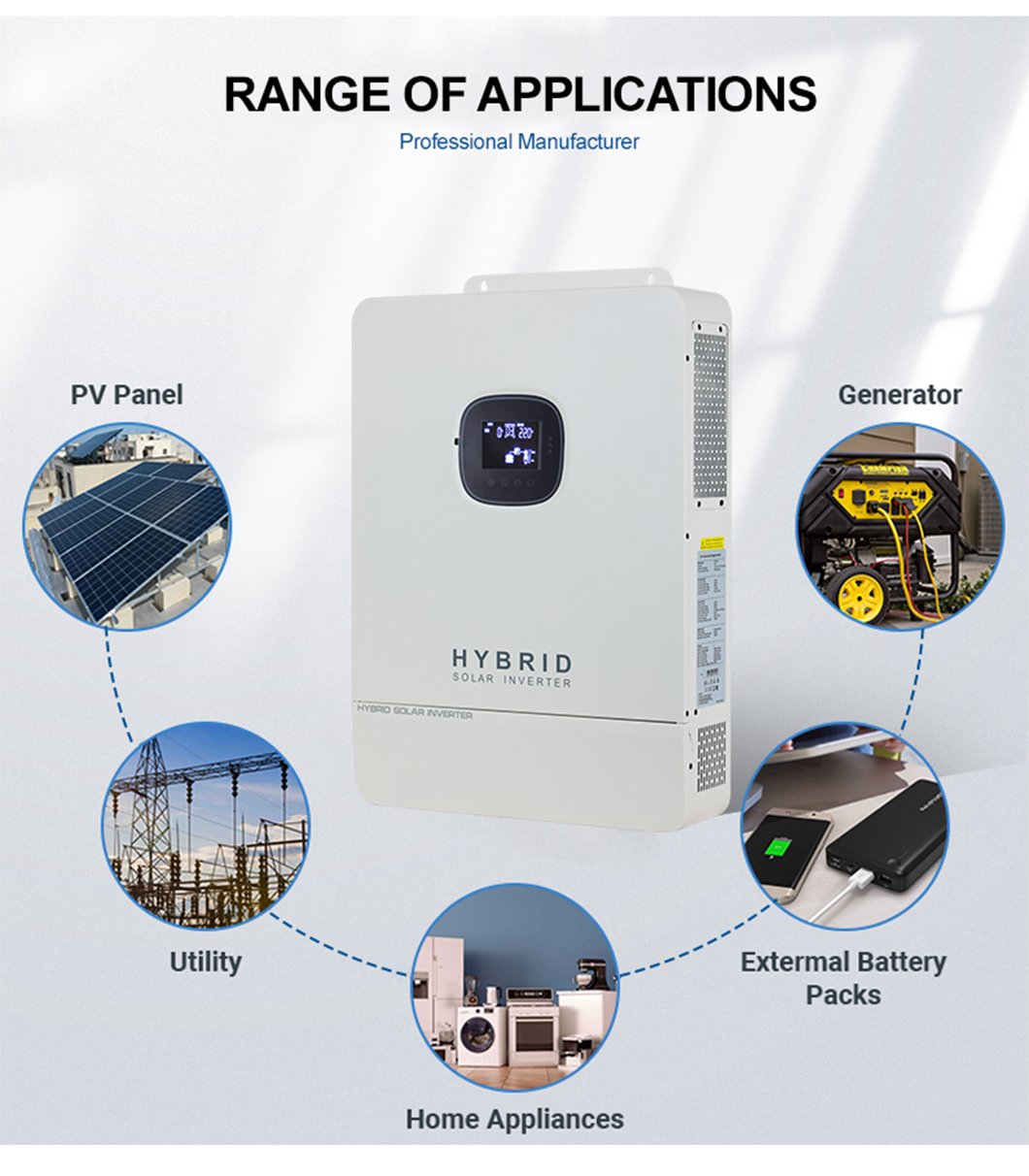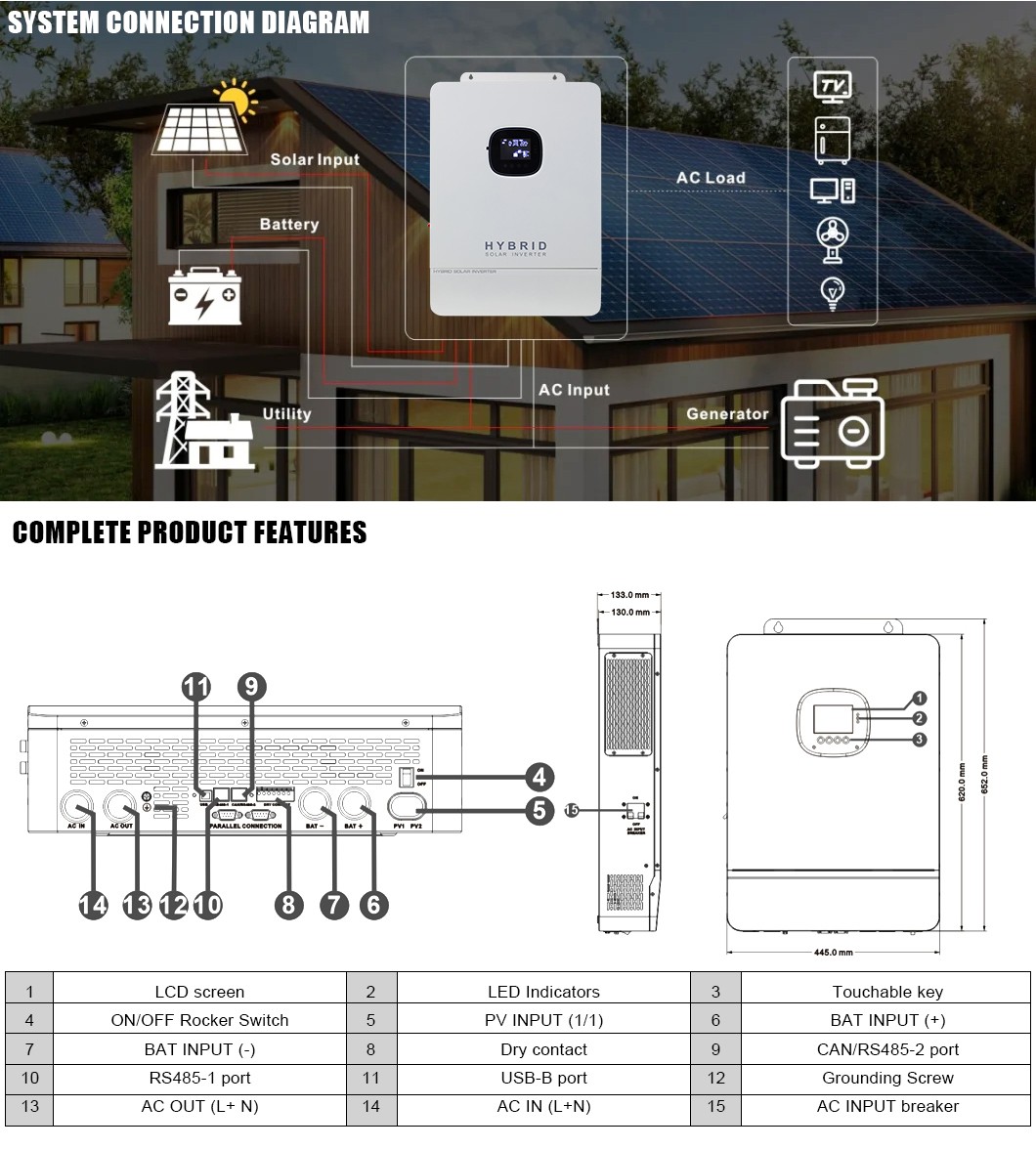Views: 3 Author: Site Editor Publish Time: 2024-07-27 Origin: Site








Solar inverters play a critical role in Photovoltaic systems by converting the direct current (DC) electricity generated by solar panels into alternating current (AC) that can be fed into the electrical grid or directly used to power homes and businesses. As the solar industry has grown exponentially over the past decade, so too have advancements in inverter technology, leading to improvements in efficiency, reliability, cost-effectiveness, and integration capabilities. In this article, Renewable Watch provides an overview of the technology trends shaping the solar inverter market and enabling the wider adoption of solar energy.

Central, string, and micro-inverters
Early solar PV systems relied on central inverters, which connected multiple strings of solar panels and converted DC power to AC power for grid connection. While central inverters demonstrated low costs per watt, they had limitations such as single point of failure risks. If the central inverter failed, the entire PV system would shut down.
This led to the emergence of string inverters, which convert the output of one string of PV panels into AC power. String inverters provide modularisation and redundancy compared to central designs, allowing for backup inverter capacity. This means that if one inverter fails, the PV system can continue functioning. They allow the PV array to be divided into multiple smaller sub-arrays, improving reliability. Multi-phase string inverters were later introduced to handle multiple strings across different phases.
A major innovation is the development of micro inverters, which convert energy at the individual solar panel level. Micro inverters maximise energy production from each panel and provide maximum redundancy by mitigating shading and soiling issues. If one panel is affected, only the output of the microinverter attached to that panel will be impacted. The choice of inverter technology is determined by the type of application – microinverters and single-phase string inverters for residential/small commercial systems, and multi-phase string/central inverters for large commercial, industrial, and utility-scale systems.
Today, central and multi-phase string inverters dominate the utility and large commercial segments while micro inverters are rapidly gaining share in the residential sector due to their flexibility and panel-level optimisation capabilities. Continued innovation is focused on enhancements such as integrated energy storage and smart grid support functions across all inverter architectures.
Higher efficiency and power density
A major focus for inverter manufacturers has been on increasing power density, which allows more power to be produced from a smaller, lighter device. This is achieved through improvements in switching topologies and semiconductor materials. Transistors have been primarily made of silicon MOSFET (metal oxide semiconductor field-effect transistor) and IGBT (insulated-gate bipolar transistor). However, in recent years, due to their multiple advantages such as higher efficiency, lower footprint, and higher operating temperatures, the use of compound semiconductors such as gallium nitride and silicon carbide has become more common.
These semiconductor materials have superior properties compared to traditional silicon-based transistors, enabling high frequency and high voltage operation. By incorporating these advanced materials, inverters can now operate at over 99 per cent efficiency, a significant jump from the 95-96 per cent efficiency achieved by previous commercial products. Higher efficiency reduces electricity losses during inversion from DC to AC, allowing more solar energy delivery to the grid.
The increase in power density from 50 Watts per cubic inch to over 500 watts per cubic inch over the past five to 10 years has allowed the production of increased energy for the same size inverter, reducing the number of inverters required for a given solar power plant and resulting in lower balance of system costs.
Improved power stage designs
Early solar inverters utilised bulky line frequency transformers to provide electrical isolation and step up the DC voltage. However, transformer-less inverter topologies were introduced to reduce size, weight and materials. They use advanced control techniques and silicon carbide switching devices to safely isolate the DC and AC sides. These types of transformers significantly reduced materials and today, the majority of string inverters in the market are transformer-less.

Advanced grid support capabilities
Inverters are evolving from simply converting DC to AC to performing advanced grid support functions that enable greater penetration of renewables into the grid. Smart inverter capabilities being introduced include voltage regulation, voltage and frequency ride-through, ramp rate control, and advanced reactive power control. This allows inverters to provide grid stabilisation traditionally performed by fossil fuel power plants, such as dynamically adjusting output to maintain optimum voltage and frequency levels.
For instance, by integrating voltage regulation features, inverters can autonomously adjust reactive power output based on local voltage measurements. This provides dynamic voltage regulation on feeders with high PV penetrations. The volt-watt control feature allows the inverter to curtail real power output when voltages rise too high. Ride-through capabilities allow solar plants to stabilise grid disturbances by remaining connected when voltages or frequency fluctuate outside normal ranges. These smart inverter functions are crucial for mitigating the impacts of increasing renewable energy penetration on grid stability.
Integrated energy storage
Pairing inverters with battery storage is a major emerging trend, especially as costs decline for lithium-ion batteries. Inverters are integrating advanced battery charge controllers, allowing solar energy to be stored for use during non-solar hours. Stored solar energy can then be seamlessly inverted to AC power as needed without interruption. For residential systems, integrating storage with solar enables households to consume their own solar energy, increasing self-consumption and bill savings. Excess solar power can charge the batteries rather than being exported for low feed-in tariff rates. The stored energy can then power the home’s loads in the evening. This provides backup power during grid outages while also reducing grid dependence.
For utilities, distributed storage helps manage the grid’s increasing renewable penetration by shifting solar generation to peak demand times. This is more cost-effective than alternatives like building new peaking power plants. Integrated storage also allows ramp rate control to mitigate PV variability – batteries can charge when solar output ramps up quickly and discharge to prevent steep drops. This grid stabilising functionality helps mitigate duck curve effects.
Modular design and standardisation
Inverter design is evolving to become more modular, flexible and standardised. In recent years, modular micro inverters have emerged, which attach to individual panels, thereby removing single point of failure risks. This distributed approach maximises energy output from each panel. Integrated modular power electronics systems further standardise micro inverter design for simplified manufacturing, thus reducing costs.

Conclusion
Solar inverters are integral components of PV systems, responsible for converting sunlight into usable electricity. Over the past decade, technological improvements have increased inverter efficiency and intelligence to boost solar energy utilisation to new optimum levels. As solar expands its energy share, inverters play an increasingly important role in maintaining grid stability, integrating storage and enabling decentralised energy grids. Therefore, continued inverter innovations centred around customisation and digitalisation are critical for supporting a renewable-based grid.







